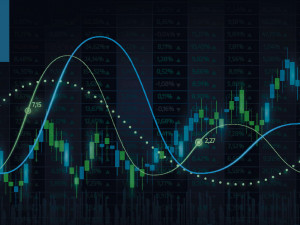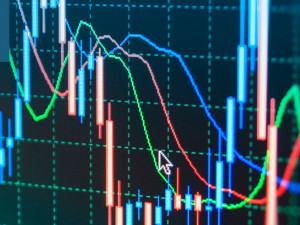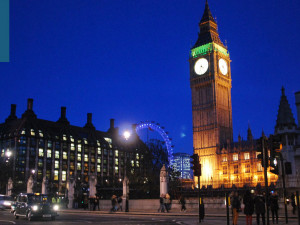
Botched Brexit furthers crisis
Morning mid-market rates – The majors
24th November: Highlights
- Housing slump to begin in the New Year
- Rise in unemployment may become unmanageable
- Mild downturn points to shallow recession
GBP – Shortage of workers now a major problem for SMEs
Many had assumed that lessening the bureaucratic red tape that Brussels considers vital for frictionless movement of goods and labour would help make the UK economy more efficient, but it seems the opposite is true.
The Prime Minister is embroiled in a row with a broad alliance of business interests, which is set to challenge Rishi Sunak over the planned bonfire of EU-inspired rules and regulations from the UK’s statute books by the end of next year.
The Institute of Directors, the Trades Union Congress and other bodies say that doing away with regulations will make a tough situation worse,
The wholesale scrapping of the rules and replacing them with yet-to-be-prepared regulations will make dealing with companies working under EU regulations impossible.
The scrapping of EU rules under the Retained EU Law Bill is a piece of legislation designed to make trade between the UK and the rest of the world smoother. Still, doing so will potentially destroy the UK’s already fragile relationship with its largest market.
The emergence of demands that the UK consider a Swiss-style relationship with Brussels is borne of frustration that perfectly workable rules and regulations will be scrapped through no reason other than if they were created in Brussels, they must be bad for business.
As the economy is considered certain to enter a recession, Brexit has been blamed for the UK’s poor performance if it hasn’t already. Pro-EU movements are becoming more vocal in their demands that the country considers a closer relationship with the Union rather than cutting all ties.
The jingoistic rhetoric accompanying the leave campaign is now considered outdated and unrealistic. The newest member of the Bank of England’s Monetary Policy Committee, Swati Dhingra has added her weight to calls for a renegotiation of the Brexit Treaty.
It appeared yesterday that in the wake of Liz Truss’s mini-budget, the pension funds sold up to five hundred billion pounds worth of gilt-edged securities and the Central Bank had to step in to plug the gap and come to the aid of the Treasury.
Sterling rose to its highest level since mid-August yesterday as the dollar fell on some hawkish comments in the minutes of the latest FOMC meeting. It reached a high of 1.2081 and closed at 1.2065.
While it is too early to say that the turmoil of the past few months is over, the rise above 1.20, whatever the reason, is an encouraging sign.
Recommend our services and earn up to £75 per successful referral
USD – It is likely to soon be appropriate to slow the pace of hikes
One of the most significant comments to emerge from the minutes is that a substantial majority of policymakers attending the meeting in November agreed that it would soon be appropriate to slow the rate of interest rate hikes.
The FOMC went on to discuss the implications of the Central Bank’s rapid tightening of monetary policy. That discussion will continue into the next meeting.
The hiking of short-term interest rates by three-quarters of one percent at the meeting had led to speculation that rates would soon reach 5%, which is the upper limit of where the most hawkish observers see them.
Now, with the less hawkish point of view expressed by the majority of members, speculation will begin that the Fed may pause entirely its policy of hiking rates that has existed since the spring.
This may be the first inkling that the Fed is considering a pivot in its determination to defeat rising inflation.
The latest data on inflation drove a degree of optimism that a taper of rates will come soon, and that degree of speculation was raised by the release of the minutes.
Recent comments from the Fed Chairman gave no sign that he agrees with a taper of rates personally, but he will accede to the majority view.
With close to three weeks to go before the year’s final meeting takes place, there is bound to be significant speculation that the cycle of higher interest rates is ending.
The dollar index suffered following the release of the minutes. It fell to a low of 106.03 and closed at 106.14 as speculation grew that other G7 Central Banks still see their rates as accommodative and will continue to tighten policy.
Next week’s release of the November employment report will now be seen as crucial to the Fed’s actions, with any real or perceived weakness likely to drive the dollar lower.
EUR – Rates need to reach begin restrictive phase soon
This would indicate that Christine Lagarde agrees with the Head of the Austrian Central Bank that rates need to be hiked by seventy-five basis points at the next meeting of the Governing Council, which takes place on December 15th.
This most likely confirms that market volatility that has begun to slow down will remain high right up until the end of the year.
The rate of decline in economic activity across the entire region has begun to slow according to flash data released for November yesterday. Should the trend continue, it raises the possibility that any recession in the Eurozone will be shallow with some countries managing to escape the downturn
Contrary to the implications of the data, there was continued speculation yesterday that the current domination of the General Council by the Central Bank Governor’s from countries with weaker economies is set to continue.
The argument over whether rates should be hiked by fifty or seventy-five basis points rages on, although that discussion will shortly be continued behind closed doors as the blackout on public discussion of policy matters is enforced.
The current situation in which Eurozone banks are tightening lending criteria has, according to the ECB, heightened the risks to the entire financial system.
Banks still have significant levels of non-performing loans on their balance sheets, and while their prudence is welcome, they need a structure by which they can continue to lend to strong viable businesses across the entire region.
The single currency is still in the thrall of the dollar. It rose to a high of 1.0405 yesterday and closed just three pips from the high. It is buoyed by the possibility of the Fed tapering interest rate increases.
Until it can attract buyers in its own right, it will continue to be seen by traders as vulnerable.
Alan Hill
Alan has been involved in the FX market for more than 25 years and brings a wealth of experience to his content. His knowledge has been gained while trading through some of the most volatile periods of recent history. His commentary relies on an understanding of past events and how they will affect future market performance.



